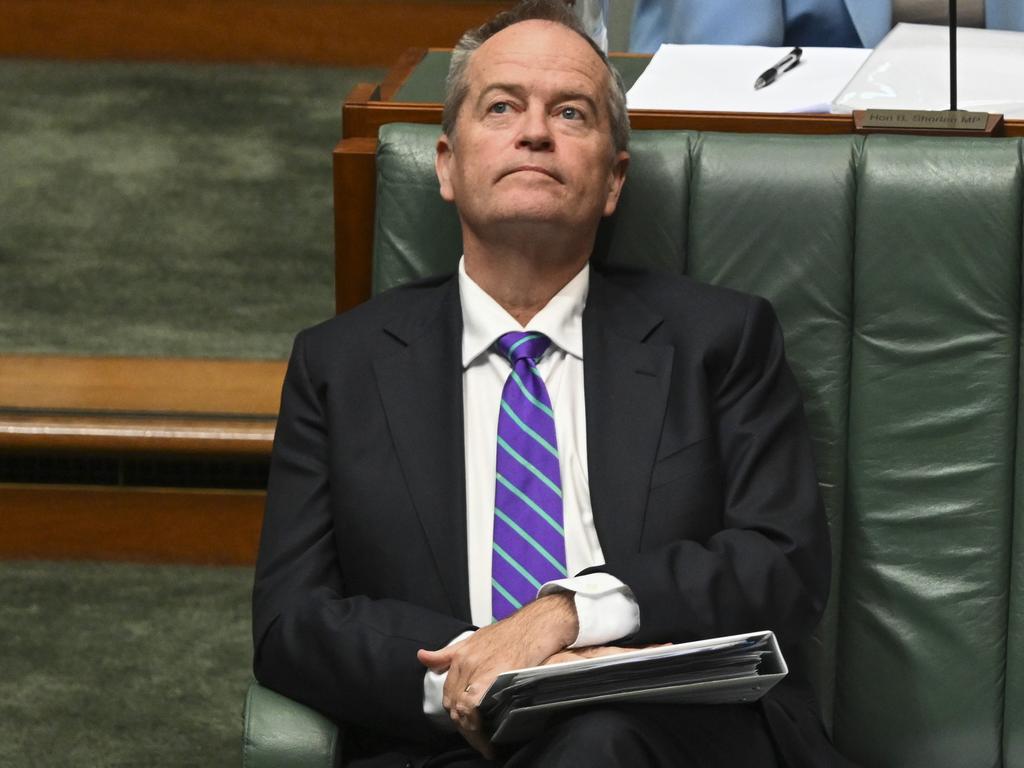Pay more for aged care or take tax hit
Labor is igniting a conversation on how to tame surging costs in aged care, disability, childcare and veterans affairs.

Australians are being asked whether they would prefer to pay more tax or pay more for their own care in a Labor plan to make services for the elderly, disabled people and veterans more financially viable.
Under a new draft national plan unveiled by the Albanese government, Labor is igniting a national conversation about the need to tame significantly increasing costs across the care and support economy with spending on aged care, disability, childcare and veterans affairs projected to balloon to more than $110bn by 2026-27.
Health economists and aged-care advocates say the plan is the government’s starkest signal since it came to power last year that it needs to rethink how care services are funded.
The document released on Sunday places “fair and reasonable consumer contributions” as a key objective and said further policy consideration may be needed in order to ensure the sustainability of all care and support services. “While this strategy proposes a number of actions and policy goals to improve services and make them sustainable, it is still all but certain that the costs of these services will significantly increase as a proportion of the government’s budget,” the document reads. “This means that there needs to be a broader national conversation about the expectations on government-funded service provision and the relative contribution between governments and individuals.”
The new national strategy – released for consultation until the end of June – comes after decades of debate in the aged care sector over whether wealthier Australians should be forced to pay more for services if they can afford it, with major providers including Catholic Health Australia, Council on the Ageing, Aged & Community Care Providers Association and leading aged-care financial analyst Stewart Brown urging Labor to raise the means-testing threshold for housing wealth by increasing consumer contributions.
Grattan Institute Health and Aged Care director Peter Breadon said Australia needed to have a debate about the funding model for care services in the context of a “big, long-term and looming demographic crisis after a legacy of structural underfunding of these jobs”.
Mr Breadon said a national conversation about the funding of services was needed amid growing demand for services and spiralling costs, and that the government had not ruled out introducing consumer contributions for disability support, with spending on the National Disability Insurance Scheme projected to blow out to $52bn by 2025-26.
“I think it is right and in a way courageous for the government to front up to this question, about who should contribute and how we will meet the growing costs because a lot of the subsidies are not very well targeted now,” he said.
“Any requirements for people to pay more will be highly controversial, but this report and they way it is laid out shows the huge and growing costs, so it is right to spark that debate about who will pay.”
University of Melbourne Honorary Professor Stephen Duckett said the government should tackle “muddled and inconsistent” consumer contributions in aged care, arguing richer Australians had been able to use their wealth in an unfair way because of flawed structures of capital contributions for aged care.

There is currently a cap on how much providers can charge for services, pegged at about $30,000 per resident or 85 per cent of a single person’s basic aged pension. Elderly Australians are also only means tested for entry into an aged care home, with the government considering up to only $186,000 of their property wealth irrespective of the value of their home, meaning a person who owns a modest home is means tested at the same level as a person who has a mansion.
“It’s about how the capital contributions to residential aged care are structured and we haven’t stepped back and said that is unfair to the taxpayer and consumer, and we have over rewarded providers at the expense of consumers and the taxpayer, and out of those three interests I think providers have had too big of a voice,” Professor Duckett said.
Assistant Minister to the Prime Minister Patrick Gorman on Sunday said the care economy was growing three times faster than any other sector and that it was critical to get the regulatory framework right to ensure services were there for all Australians.
“We’ve basically got this huge challenge, and what we want to do is stop jumping from crisis to crisis, as the last government did, and start planning for the future, delivering those stronger foundations for a better future for secure jobs in these industries and to make sure that we’ve got the workers that we need, so that everyone can get the care they’re going to rely upon at some point in their life,” Mr Gorman told Sky News.
ACCPA chief executive Tom Symondson welcomed the government’s willingness to tackle controversial funding changes and said it must address the “elephant in the room” that funding had not kept up with rising costs.
Spending on aged care has ballooned in recent years, with last month’s federal budget revealing aged care costs had hit almost $30bn this financial year. But around 70 per cent of residential aged care facilities are running at a loss.







To join the conversation, please log in. Don't have an account? Register
Join the conversation, you are commenting as Logout